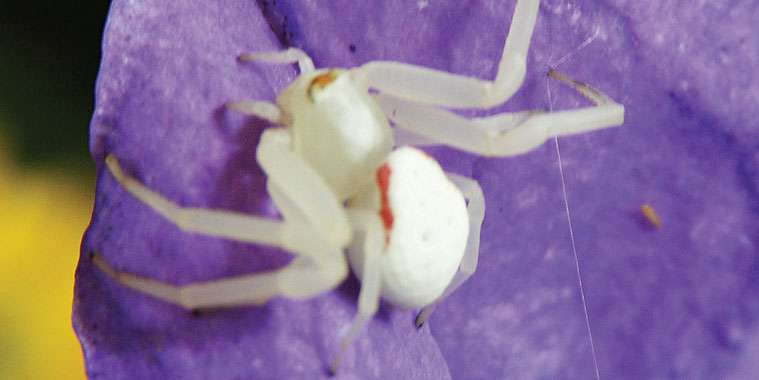Most of the spiders found in Winnipeg are harmless, or at least not venomous. But there are a couple of serious challengers to that title. Although rare, both the venomous black widow and the even more alarming brown recluse are to be found in the southern reaches of our province. How far south and how rare? Well, a caller to my radio show recently reported that a friend who lived in the Notre Dame-Maryland area was bitten by a brown recluse spider. She said the wound grew into flesh eating disease.
Brown recluse bites don’t hurt too much on contact, but as the hours pass, the venom effectively kills the flesh around the wound which grows larger. Their bites are seldom deadly but there can be complications from infection. A similar wound can be caused by a bite from a hobo spider, more often seen in western provinces but often hitching a ride to our town on eastern bound trucks.
As for black widows, yes, we do get the odd one in southern Manitoban, but in most cases, they are not nearly as deadly as we are led to believe and in all cases, washing the wound, applying antibiotic cream, icing and elevating the affected body part are all part of the first line of defence. If the bites begin to discolour, you experience nausea, have intense pain, muscle stiffness, sweating, itching and a rash or trouble breathing, get medical aid. Take bites by these animals to children seriously and get aid right away.
These spiders, like the long-legged cellar spiders, are often found indoors in these parts, perhaps brought in with your bananas or produce. Outside, you may come across wolf spiders that spin silken egg sacs to carry their live babies around, which they do for about a week. Otherwise, they don’t spin webs, but rather actively hunt their insect prey. Jumping spiders spin webs to encase their eggs, too, but they use silken threads as draglines to launch themselves from place to place.
A fascinating and pretty little spider is the crab or goldenrod spider, often found on flower blossoms. They can be hard to see due to their ability to change colour to match the plant of the day, however their natural state is white with pink chevron stripes. They move from side to side like a crab, hence the name. They hunt their prey.
The champion-sized spider in these parts is the very large dock spider, whose legs can reach three inches from side to side. They hang out in damp, dark places waiting for their prey to chance by.
The orb weaver spider is a large bodied wolf spider that can be the side of a toonie, especially when the female is about to lay her eggs – up to 200 of them. These are harmless spiders that eat tons of insects in your garden. Orb spiders do spin webs.
Black house spiders are common and harmless. They will scurry away upon approach. Just like verything else, spiders have to eat. If they are hanging out in your basement, chances are that they have found a ready food source of bugs.
Although spiders have six to eight eyes depending on the species, they don’t have ears. Instead, they detect movement through extremely sensitive hairs on their legs. This say this may be one of the reasons that they aren’t caught in their own webs, although nobody knows their secret for sure. Some think they know where the sticky parts are and avoid them. Others think it could be something in the way they walk, with a tap-tapping motion.
Whatever their secret, spider webs are stronger than steel of the same dimensions and more elastic and tougher than Kevlar.
Spiders are also our friends in the garden. They help keep it pest free. All spiders combined eat more insects per year in weight than the weight of the entire human population.
Dorothy Dobbie is the publisher of Manitoba Gardener magazine. You can subscribe by calling 204-940-2700 or go to localgardener.net



